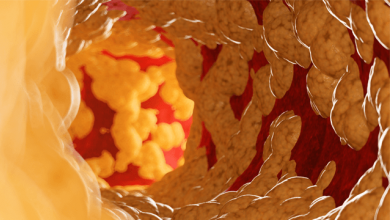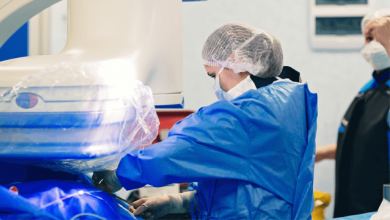Search results
PROMOTED
Author(s):
Nicolas M Van Mieghem
,
Kendra J Grubb
,
David Hildick-Smith
,
et al
Start date:
Mar 26, 2024
Author(s):
Davide Capodanno
Added:
3 years ago
Although a combination of multiple strategies to prevent and treat coronary artery disease (CAD) has led to a relative reduction in cardiovascular mortality over recent decades, CAD remains the greatest cause of morbidity and mortality worldwide.1 Based on clinical presentation and prognosis, CAD spans from stable presentations (e.g. chronic angina pectoris) to acute coronary syndromes (ACS),…
View more
Author(s):
Raffaele De Caterina
,
Carlo De Innocentiis
,
Marco Zimarino
Added:
3 years ago
Multivessel coronary artery disease (MVCAD) is defined by the presence of ≥50% diameter stenosis of two or more epicardial coronary arteries. The presence of MVCAD indicates poorer prognosis and a significantly higher mortality than single-vessel disease. In MVCAD, revascularisation can be achieved by either percutaneous coronary intervention (PCI) or coronary artery bypass grafting (CABG).1,2 A…
View more
Author(s):
Anna Caggegi
,
Davide Capodanno
,
Claudia Tamburino
,
et al
Added:
3 years ago
Identifying the most appropriate revascularisation strategy for patients affected by unprotected left main coronary artery (ULMCA) disease has been considered a topic of great interest and discussion in the past few years. Although coronary artery bypass grafting (CABG) is still conventionally regarded as the standard of care for patients with significant ULMCA disease eligible for surgery,…
View more
Author(s):
,
Adriano Caixeta
,
Gregg Stone
Added:
3 years ago
Accurate characterisation of coronary artery disease (CAD) anatomy based on the diagnostic angiogram is essential to select the optimal strategy of revascularisation. Recently, the SYNTAX score generated a great amount of interest because of its ability to risk-stratify and discriminate outcomes of patients with complex CAD undergoing percutaneous coronary intervention (PCI) as compared to…
View more
Author(s):
J Raider Estrada
,
Jonathan D Paul
,
Atman P Shah
,
et al
Added:
3 years ago
While the breadth of procedural offerings in interventional cardiology (IC) has exponentially expanded over the past four decades to include cardiac structural, peripheral arterial, and venous interventions, percutaneous coronary intervention (PCI) remains at the core of the field, accounting for the greatest percentage of therapeutic catheter-based procedures performed by IC practitioners in the…
View more
Trans-catheter Aortic Valve Implantation Guidelines - Does the Latest Evidence Change our Views?
Author(s):
Hannah McConkey
,
Bernard Prendergast
Added:
3 years ago
Article
Author(s):
Edward McNulty
Added:
3 years ago
The debate over the optimal mode of revascularisation for unprotected left main (ULM) coronary artery disease intensified with the advent of drug-eluting stents (DES). Professional society guidelines addressing ULM disease have been revised at an increasing frequency,1,2 the significance of randomised comparisons has been variously interpreted, and observational comparisons have become a…
View more
Author(s):
Nathan J Smith
,
Adhitya Ramamurthi
,
Mohammed Kamalia
,
et al
Added:
4 years ago
Author(s):
Konstantinidis Nikolaos
,
Sianos Georgios
Added:
3 years ago
Saphenous vein grafts (SVGs), despite their inherent inferiority to arterial conduits, still remain the type of grafts most commonly used during coronary artery bypass grafting (CABG).1 The natural and post-interventional biological behaviour of SVGs differ from that of native coronary vessels, increasing the risk of restenosis.2 SVG disease after CABG is a strong predictor of mortality.3 In a…
View more













